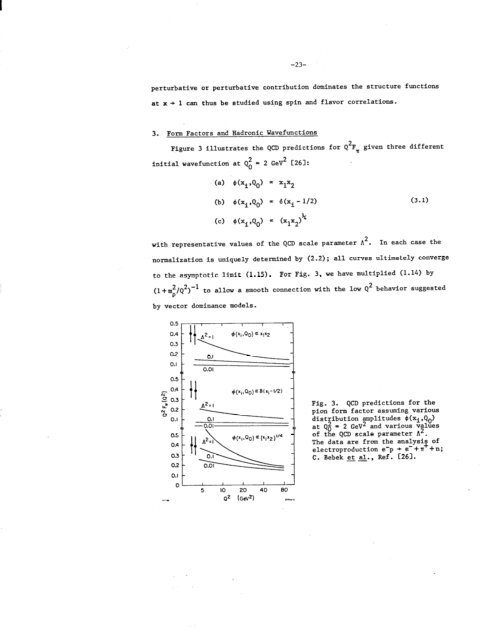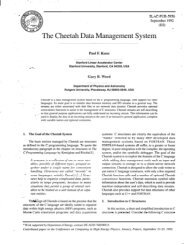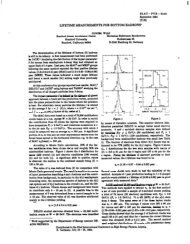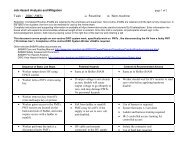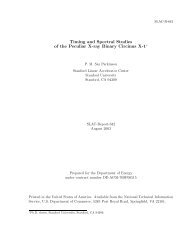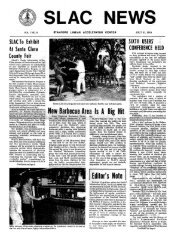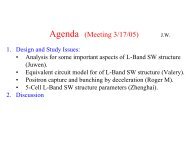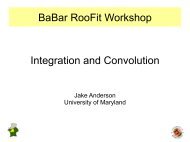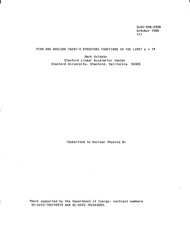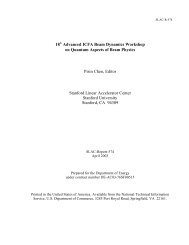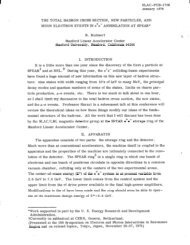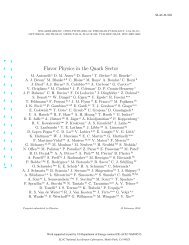slac-pub-2605 - SLAC - Stanford University
slac-pub-2605 - SLAC - Stanford University
slac-pub-2605 - SLAC - Stanford University
You also want an ePaper? Increase the reach of your titles
YUMPU automatically turns print PDFs into web optimized ePapers that Google loves.
-23-<br />
perturbative or perturbative contribution dominates the structure functions<br />
at x + 1 can thus be studied using spin and flavor correlations.<br />
3. Form Factors and Hadronic Wavefunctions<br />
Figure 3 illustrates the QCD predictions for Q‘F, given three different<br />
initial wavefunction at QE = 2 GeV2 C261:<br />
(a> 4(x,,Q,) = x1x2<br />
(b) L$(x,,Q,) = 6(xi- l/2) (3.1)<br />
(c) 4 (xi ,Q,) = (x1x2><br />
%<br />
with representative values of the QCD scale parameter A2. In each case the<br />
normalization is uniquely determined by (2.2); all curves ultimately converge<br />
to the asymptotic limit (1.15). For Fig. 3, we have multiplied (1.14) by<br />
(1+m2/Q2)-1 to allow a smooth connection with the low Q2 behavior suggested<br />
P<br />
by vector dominance models.<br />
It<br />
8251<br />
+(X,,00)a8(Xi-l/21<br />
0.1<br />
-<br />
-<br />
p.01<br />
i<br />
5 10 20 40 80<br />
II2 (GeV2) *..,.n<br />
Fig. 3. QCD predictions for the<br />
pion form factor assuming various<br />
distribution amplitudes $(xi,QG)<br />
at Qs = 2 GeV2 and various values<br />
of the QCD scale parameter A2.<br />
The data are from the analysis of<br />
electroproduction e-p + e-+r'+n;<br />
C. Bebek et al., Ref. C261.


